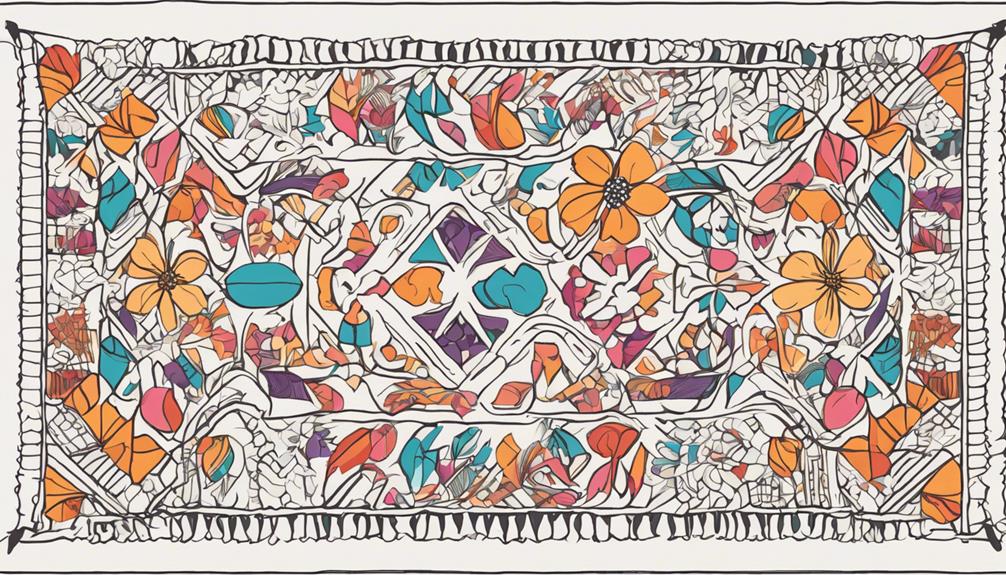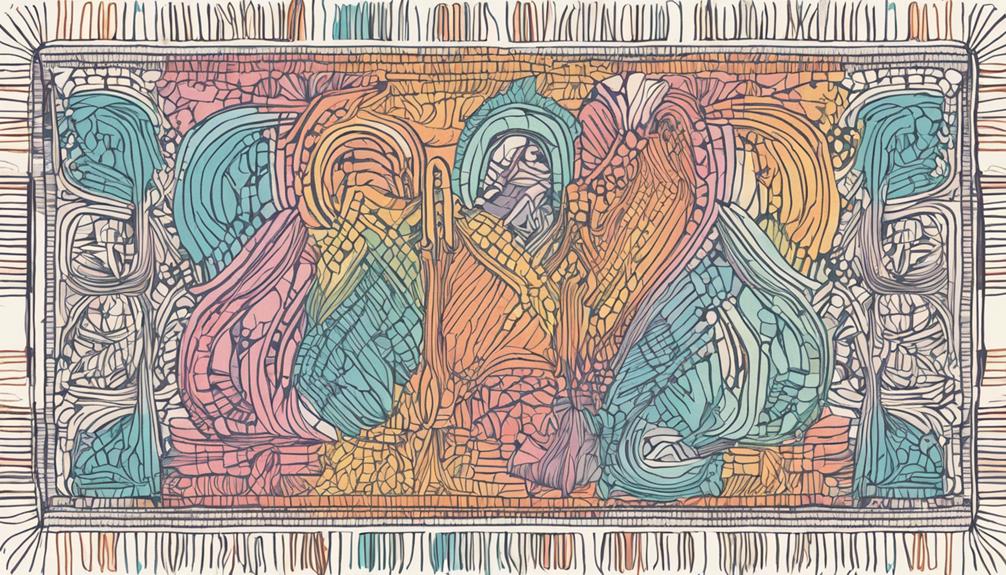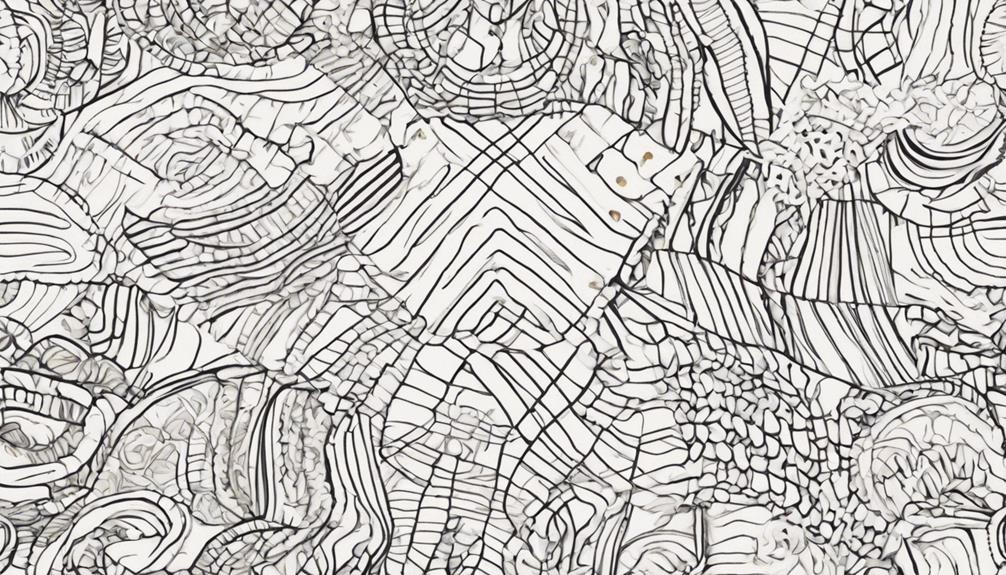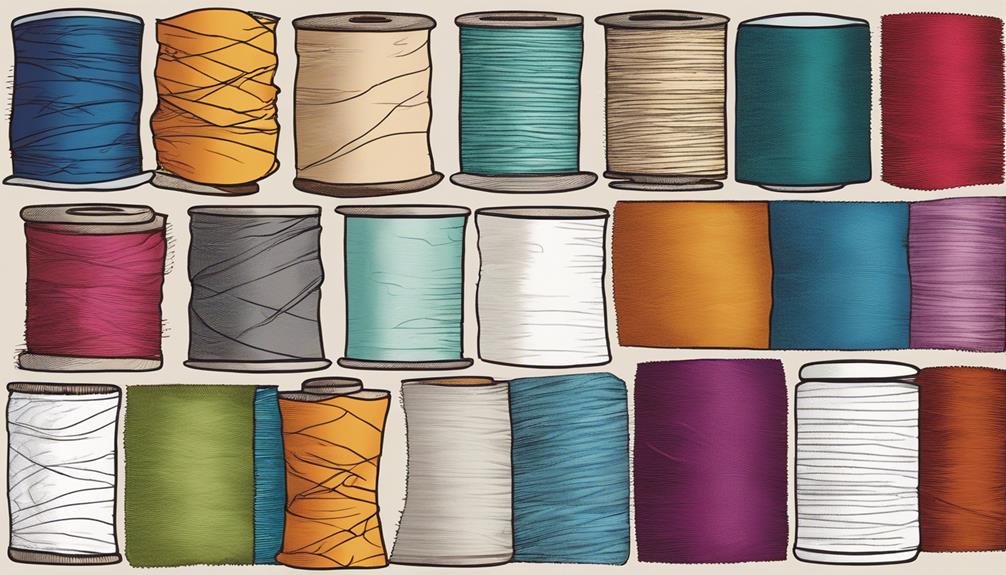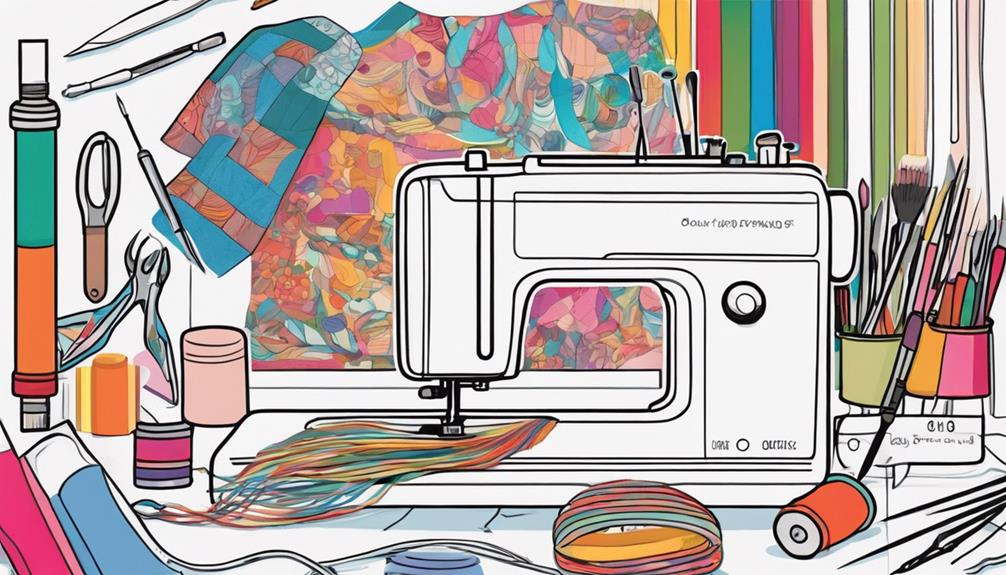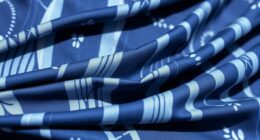Delve into the realm of textile art with Kristine Stattin’s abstract creations, Hale Ekinci’s combination of embroidery and quilting, and Vanessa Barragão’s environmentally focused pieces. Appreciate the beauty of precise stitches and intricate designs like French knots, the personal narratives conveyed through crochet and quilting, and the powerful messages woven into latch hook and crochet techniques. Experience the boundless creativity and expertise in these artworks that push the boundaries of traditional fiber art. The complex stories and innovative methods will engage your senses and ignite your creativity, welcoming you into a world where threads blend seamlessly with nature and cultural influences.
Key Takeaways
- Vanessa Barragãos' 'Afterlife' collection combines latch hook and crochet to address environmental issues.
- Patricia Kelly's 'Reductive Art' reflects the essence of the Irish landscape through machine stitching.
- Meri Sawatzky's 'Information Landscape' showcases intricate embroidered topographical maps on linen.
- Textile art encompasses a wide range of techniques like embroidery, quilting, weaving, and felting.
- Historical evolution shows how textile art has evolved from ancient civilizations to modern-day innovative creations.
Contemporary Textile Artists
- A vibrant woven tapestry by a contemporary artist.
- Intricate hand-embroidered textile art piece.
- A modern quilt with unique patterns and textures. –v 6 –ar 16:9
Contemporary textile artists showcase a diverse range of innovative techniques and themes in their vibrant creations. Within the art world, these artists push boundaries and redefine traditional notions of fiber art.
For instance, Kristine Stattin's abstract explorations using straight stitch and French knots demonstrate a unique approach to textile art. Her pieces play with color, line, shape, and texture, inviting viewers to explore into a world of intricate details.
Hale Ekinci challenges Western art hierarchies by incorporating embroidery, quilting, and crochet into her artworks, drawing inspiration from personal history and cultural identity. This blend of techniques not only showcases her creativity but also sparks conversations about the intersection of art and heritage.
Vanessa Barragãos and Gurjeet Singh use their art to raise awareness about pressing environmental issues. Barragãos creates giant coral reef sculptures from waste materials, while Singh crafts soft sculpted heads from recycled materials, both conveying powerful messages about sustainability.
These contemporary textile artists exemplify the transformative potential of fiber art in addressing relevant social and environmental concerns.
Textile Artists' Techniques

Textile artists employ a diverse range of techniques to create their intricate and innovative artworks. When exploring the world of textile art, you'll find that textile artists often experiment with various methods to bring their visions to life.
Some techniques they use include:
- Photocopy Processes and Xerox Transfers: Joan Schulze layers images on silk, combines them with batting and backing, and finishes with quilting and stitching.
- Soft Sculpting with Recycled Fabrics: Gurjeet Singh hand-sews unique soft sculpted heads using recycled materials, starting from simple forms and developing the sculptures organically.
- Multifaceted Textile Crafting: Vanessa Barragãos employs crochet, latch hooking, weaving, knitting, felting, and hand-tufting techniques, sourcing materials to highlight environmental concerns.
- Abstract Stitching Explorations: Kristine Stattin creates abstract artworks using straight stitch, French knots, and machine and hand-stitched embroidery to explore color, line, shape, and texture.
Artistic Inspirations and Themes
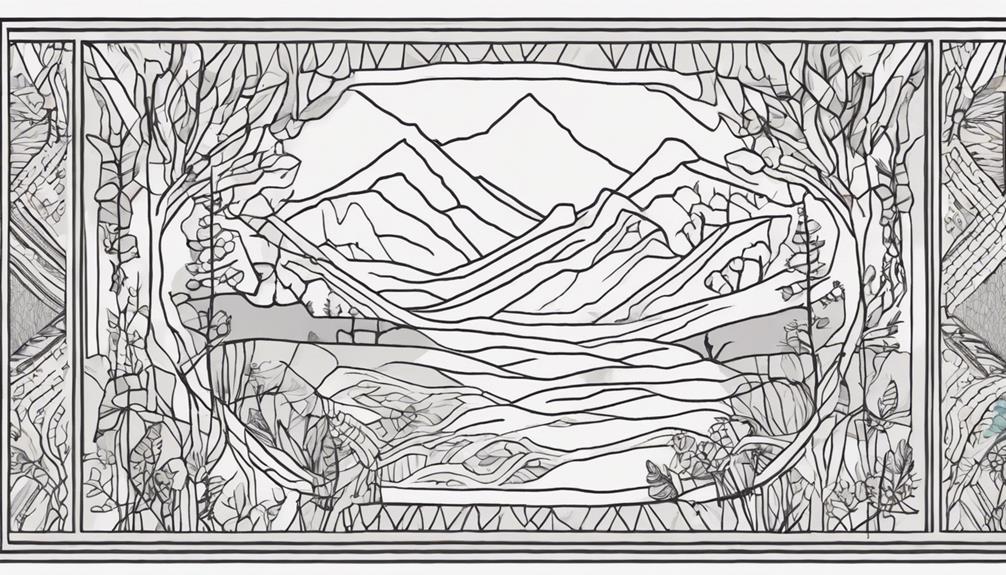
Drawing from a variety of natural and cultural influences, textile artists infuse their creations with unique inspirations and themes. Vanessa Barragãos, known for her tapestries, rugs, and sculptures, draws inspiration from the vibrant marine life and intricate beauty of coral reefs.
Patricia Kelly, on the other hand, finds her muse in the ever-changing colors, light, and textures of the Irish landscape, translating these elements into abstract textile art that mesmerizes the senses.
Meri Sawatzky's work, 'Little lines of thread,' takes inspiration from topographical maps and vintage cartography, employing linen, acrylic paint, and embroidery floss to create intricate pieces that reflect the complexity of geographical features.
These textile artists demonstrate how diverse sources—be it the depths of the ocean, the lush greenery of Ireland, or the detailed lines of maps—can fuel their artistic expressions, resulting in alluring pieces that intertwine nature, culture, and creativity in a harmonious dance of threads and textures.
Specific Artworks and Collections

Exploring the depths of their artistic vision, these textile artists have masterfully crafted specific artworks and collections that showcase their unique techniques and inspirations.
- Vanessa Barragãos' 'Afterlife' collection intricately weaves together environmental commentary using latch hook, crochet, and felting techniques with materials sourced from Portuguese textile factories, creating a tapestry of consciousness.
- Patricia Kelly's 'Reductive Art' boldly captures the essence of the Irish landscape through simplistic machine stitching, evoking emotions through abstract shapes and repetitive marks that speak volumes.
- Meri Sawatzky's 'Information Landscape' mesmerizes with intricate topographical maps meticulously embroidered on linen stretched over a vintage bass drum hoop, blending the precision of acrylic paint with the softness of embroidery floss, offering a tactile journey through data and geography.
Each artwork and collection serves as a tribute to the boundless creativity and skill that can be achieved within the field of textile art, pushing boundaries and redefining traditional perceptions.
Historical Evolution of Textile Art
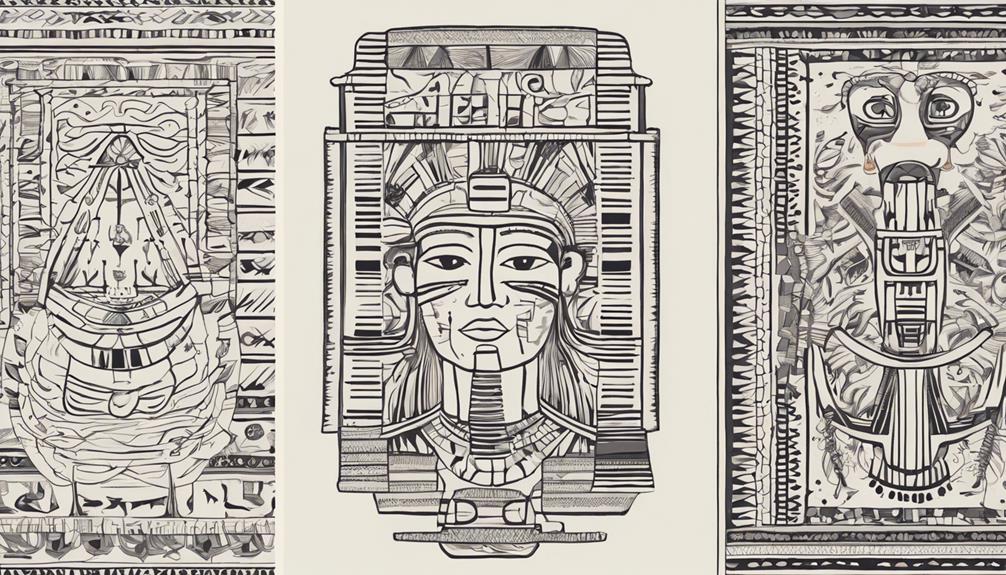
Throughout history, various civilizations across the globe have woven intricate stories and cultural traditions through the artistry of fabrics and threads. Ancient techniques like dyeing, weaving, embroidery, knitting, and crochet have laid the foundation for the evolution of textile arts.
From the creation of elaborate wall hangings in ancient times to modern-day quilt making, textile art has continuously transformed. Renowned artists like Anni Albers and Sheila Hicks have played pivotal roles in shaping the contemporary landscape of textile arts.
Albers, a Bauhaus artist, explored the intersection of art and technology, revolutionizing the way textiles were perceived. On the other hand, Hicks brought a fresh perspective to the field, incorporating diverse materials and techniques into her creations.
The historical evolution of textile art not only showcases the ingenuity of ancient artisans but also highlights the innovative spirit of contemporary artists who push boundaries and redefine the possibilities within this medium.
Frequently Asked Questions
What Is a Textile Art?
Textile art involves creating imaginative pieces using fabric, thread, and yarn. It includes various techniques like weaving, embroidery, and quilting.
Artists use textiles to convey stories and emotions, exploring themes such as culture, nature, and social issues. These artworks can be functional or purely decorative, providing a platform for expression.
Through textile art, individuals can showcase their creativity and connect with viewers on a deeper level.
Why Are Textiles All the Rage in the Art World Right Now?
In the art world right now, textiles are all the rage for their unique ability to blend tradition with innovation, offering artists a dynamic canvas to express their creativity.
The texture, color, and dimensionality of textiles provide a rich tapestry for expressing complex themes and emotions.
As artists push boundaries and challenge conventions, textiles continue to captivate audiences with their tactile appeal and intricate storytelling.
What Is the Oldest Textile Art?
The oldest textile art is weaving, dating back thousands of years and considered one of the earliest forms of artistic expression.
Weaving evolved independently in various cultures and played a pivotal role in creating essential items like clothing and shelter.
Over time, this art form diversified, leading to the development of intricate techniques, patterns, and designs in textile art.
What Is an Example of a Textile Craft?
Weaving, an enthralling example of a textile craft, has been practiced for thousands of years worldwide. This craft involves interlacing threads to create beautiful fabrics with intricate patterns and textures.
You can explore various weaving techniques, from simple designs to complex tapestries, showcasing the versatility and creativity of this ancient art form.
Immerse yourself in the world of weaving and discover the endless possibilities of fabric creation through this enchanting craft.
Conclusion
To sum up, textile art continues to thrive in the modern art world, with artists using various techniques to create unique and visually stunning pieces.
Did you know that the global textile art market is estimated to reach $2.8 billion by 2027? This just goes to show the enduring popularity and creativity of this art form.
So, next time you see a beautiful textile artwork, appreciate the skill and passion that went into creating it.

